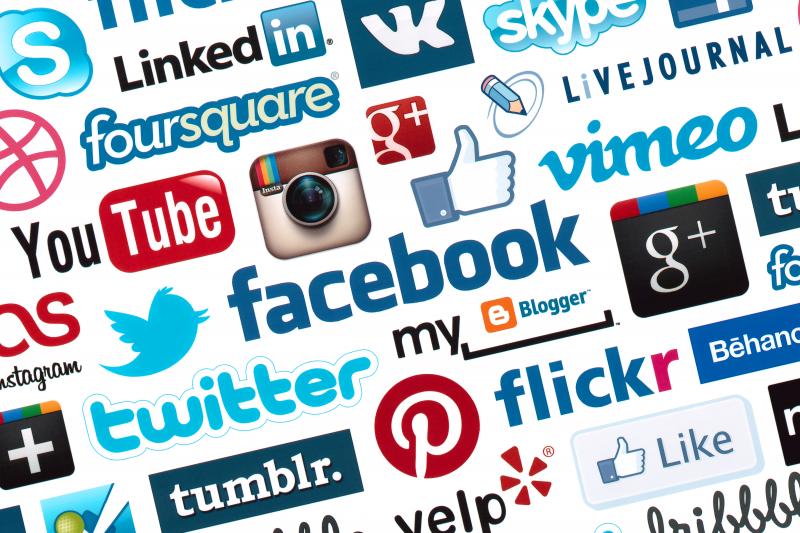by Lindsey Winsemius - Posted 7 years ago

Perhaps we’re all suffering from hashtag burnout. Perhaps
our busy minds don’t want to take the extra few moments to translate a hashtag
and make sense of the post. Perhaps Twitter has made searching for terms
(regardless of whether they have a hashtag or not) so easy that hashtags are
becoming irrelevant.
Whatever the reason, a recent study by Locowise found that adding
hashtags had no effect on engagement rates. In fact, tweets without
hashtags outperformed tweets with hashtags. (Source: Adweek)
Takeaway: It is better to focus on the quality of your original content instead of overly relying on hashtags for increasing engagement. Test different types of posts, some using hashtags and some without. See what performs best.
Instagram has a 58 times higher engagement rate for brands
than Facebook, and 120 times better than Twitter.
The majority of users on Instagram are under age 35, a
marked difference from Facebook which tends to have an older user base. Also,
many brands have not transitioned to Instagram yet, leaving the growing,
engaged audience ripe for the picking by the savvy brands that are utilizing
the platform.
Takeaway: If you’re targeting millennials or young adults, make sure you’re investing time in Instagram. Not sure how? Get everything you need to know about marketing on Instagram in 2017 now.
Only 20% of Facebook posts generate an emotional response
while no ads did. (Source:AdEspresso)
I’ve told you before that many people make purchasing
decisions based on emotion. But that doesn’t seem to be driving their actions on Facebook.
Because different parts of our brain become active during different activities,
viewing a video causes an emotional response. Reading text tends to bring out a
more logical, analytical response. Unless you’re running a video ad, don’t rely
on emotion to get clicks and encourage engagement.
Takeaway: Keep the emotional ads for your landing pages / sales pages. If you’re running ads on Facebook, focus on using Power Words (the hook) to grab people’s attention.
What are some good power words? “Now”, “Free”, “Because”, “Get”
are all great words that will appeal to ad viewers. For example: “Get Free Tips
For Marketing Now: Because we can all use a little help sometimes.”
Target the most specific audience you can, create a
compelling ad using power words, and really sell the click. Once you’ve gotten
the visitor to your sales page, then use emotion to make the sale.
We use YouTube to entertain, to educate, to connect. From
classrooms to household projects, YouTube is a hub of ideas. Any company can
leverage this power to build their brand and get more clicks to their website.
Takeaway: Try video advertising on YouTube. Have fun, be creative, but post something!
Need help? Find out how to boost views of your videos on
YouTube. http://www.apogeeinvent.com/blogs/C/2017/03/09/How-to-Boost-Video-Views-on-YouTube/t/video-marketing
96% of the people that discuss brands online do not follow those brands’ owned profiles. (Source: Brandwatch)
Do
you monitor your brand on social media? People might be talking about you, but
they might be doing it “behind your back”. Keep track of the things being said
about your brand on social media to gain valuable insights and monitor brand
health.
Takeaway: It isn’t enough to just monitor your pages and profiles on social sites. See what people are saying about your business by searching for your business’ name or product names. Many social media tools allow you to monitor hashtags or specific searches.
93% of Pinterest users use the platform to plan or make purchases.
Pinterest is especially important for retailers or B2C businesses. People are
using the social site to find products AND to purchase them.
Takeaway: Pin your products on descriptive boards. Make sure your product images are appealing, and include images of people interacting with your products to encourage more pinning by consumers.
Almost 80% of social media time spent on platforms is from a
mobile device. Make sure your ads can run on mobile and they link to
mobile-friendly content.
Takeaway: Check your own ads and social profiles on mobile to see what impression visitors are getting. Click to your website and landing pages to make sure they are loading fast and displaying properly. Always optimize your posts for mobile.
39% of LinkedIn users pay for monthly premium accounts. People who use
LinkedIn are serious about connecting, hiring, and doing business on the social
site. Don’t underestimate the power of LinkedIn in providing a reference for
your business to potential customers and connecting you with key people in your
industry.
Takeaway: Consider being active on LinkedIn, particularly if you are a B2B company. Referrals are crucial, and being well-connected can be a great referral.
More than 1 in 3 Internet users say they go to social networks when looking for more information about a brand or product. Social media is an important way to build your brand and build trust in consumers. If your business has good reviews and positive interactions, it will help potential customers learn more about you and make them more likely to look favorably upon your brand and become a customer.
Takeaway: It is worth your time to gain reviews and to engage positively with followers. Having an active profile will also help users to trust in your brand.
Social media is always changing. Knowing the facts will help you make the most of this powerful marketing medium. Do you use social media? What fact do you find most surprising?